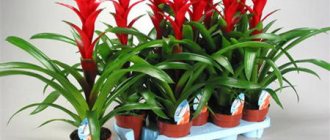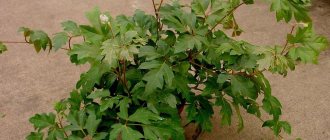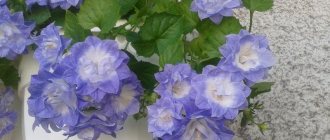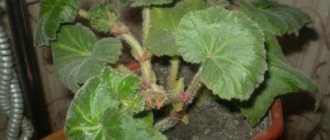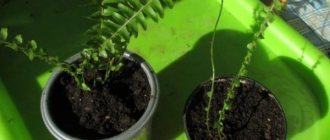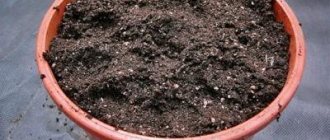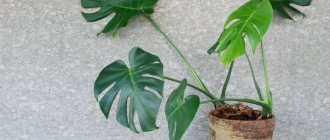Guzmania belongs to the family of bromeliads or, as they are also called, pineapple flowering plants. Under natural conditions, guzmania grows everywhere from Florida to Brazil and is especially common in Costa Rica and Colombia. Guzmania got its name in honor of the Spanish naturalist Anastasio Guzman, so it would be even more correct to call the flower Guzmania . Guzmán traveled through South America and died during an expedition to Ecuador in 1807.
The height of Guzmania reaches 45 cm in large plants. The peduncle is usually shorter than the leaves. Flowering lasts from 2 to 6 months. The colorful flower grows from the center of the plant and can be red, yellow, orange or dark purple depending on the species. Guzmania flowers have no scent. What we mistakenly call a flower are actually modified leaves called bracts.
The plant has long, thin, narrow, shiny green leaves that rise from a deep central bowl. Guzmania is slightly taller than other bromeliads.
Guzmania - home care and its features
Flower growers love guzmania for its originality and bright colors of inflorescences, which can be yellow, red, burgundy and other colors. Indoors, guzmania, the care of which at home will require the owner to follow certain rules, grows no more than half a meter and, taking into account the specifics of its cultivation, will form a healthy and beautiful bush.
Guzmania will form correctly only if the correct container is selected for planting it - the pot should be small and shallow, since the plant does not have a voluminous root system.
In the wild, exotic guzmania grows on the trunks of tropical trees, and this suggests that ordinary soil is not suitable for its proper development, and the best option would be a mixture of sphagnum moss, peat chips, sand and turf soil in a 1:1 ratio.
When breeding guzmania, it is important to know that it is better to plan all the feeding needed by the plant for the spring, and this indoor flower must be replanted immediately after purchasing it, doing this with special care, since the roots are delicate and can be damaged during replanting. The temperature in the room with guzmania should fluctuate between +18ﹾ25+ ... ﹾ C in the active growth phase and not exceed +20ﹾ C during the dormant period, that is, in winter.
lighting - the best option for guzmania would be indirect bright light, but direct rays should not be allowed to hit the leaf rosette, as this will burn the leaves.
It is ideal to place a container with guzmania on windows facing east or west, but on the south side the plant will not be comfortable, so you will need to create partial shade.
Guzmania on the windowsill - in the photo
Guzmania, which is quite easy to care for at home, is an unpretentious plant, but it is not always possible to achieve flowering, so flower growers have developed a special technology:
- The plant along with the pot should be placed in a plastic bag, creating greenhouse conditions, and fruits – bananas and others – should be placed in the bag along with it;
- When the bananas begin to rot, a gas will be released into the atmosphere of the greenhouse, stimulating the growth and development of flowers;
- You should not remove the film until the first inflorescences appear, and rotting fruits need to be changed regularly.
Young light leaves formed in the center of the plant will actively grow, stretching upward and forming a bright, elegant inflorescence.
Flowering and dormant periods
The most important and difficult period in a plant’s life is flowering time. The first bracts of Guzmania appear only in the third or fourth year of development. Flowering continues for several months, but only in favorable conditions. As soon as the shade of the guzmania's foliage changes or a green peduncle begins to slowly rise from the rosette, this is the very moment before flowering.
The plant does not have a clearly defined dormant period. The flower does not shed its leaves, the lighting requirements do not change. He only needs to lower the temperature, reduce watering and stop feeding.
The flowering of guzmania is a clear sign that the flower is completely satisfied with the conditions of maintenance and care provided to it by the grower
How to make Guzmania bloom?
There is a trick that allows you to bring the Guzmania flowering closer. To do this, place a container with sliced apples, pears or bananas next to it and cover the entire “composition” with a plastic bag. As fruit decomposes, ethylene is released, which stimulates flowering. You just need to be careful not to allow mold to appear, which can cause rot to develop.
How to water Guzmania and what fertilizers to use
The flower loves moisture, but not every gardener knows how to water guzmania - this must be done regularly, following a certain technology - water must be poured into the leaf rosette, and during the warm season, the green part of the flower must be regularly sprayed.
Watering is one of the most important factors in the harmonious development of healthy and lushly blooming guzmania, so it is important to follow the basic rules of watering:
- Water is not poured into the soil near the plant, but directly into the leaf rosette, as mentioned above, and the moisture that appears in the pan immediately after watering must be immediately removed;
- Watering the soil in a pot should be done in exceptional cases when the air temperature in the home is high for guzmania;
- There is no need to remove water from the pan if the air temperature in the room is high and the humidity level is insufficient for guzmania;
- In warm weather, guzmania should be watered every day, and in the resting phase (autumn and winter), watering should be reduced to 2 times a week;
- Regardless of the temperature conditions indoors and outdoors, guzmania needs daily spraying, which should be done with warm water.
And, despite the fact that guzmania needs a large amount of moisture, excessive amounts can negatively affect the development of the plant.
In order for guzmania to bloom magnificently and for a long time, it must be properly fed, and this must be done with fertilizers of mineral and organic origin. Balanced fertilizers for guzmania can be obtained in a specialized store, but it is not recommended to prepare the fertilizer yourself, as the proportions of the components may be disrupted.
Guzmania, the rosette of which is its main decorative element, needs feeding from the moment the plant begins to bloom, and this usually happens at the end of summer. You need to water the plant with fertilizer in the same way as with ordinary water - through an outlet, but the nutrient solution should not get into the soil near the guzmania. If the rules for feeding the plant are followed correctly, guzmania will delight you with abundant flowering for several months.
Guzmania transplant after purchase
How to transplant Guzmania photo
It is better to immediately transplant the purchased plant into a beautiful, spacious pot with prepared nutritious soil; read more about the composition of the soil below. Transplantation is carried out using the transshipment method: water the soil and leave for several hours until it becomes limp. Afterwards, carefully release the earthen lump from the pot, trying not to disturb its integrity.
Lay out a drainage layer of expanded clay, cover the soil with a layer of several centimeters, install the guzmania vertically, and fill the side space with soil. Water carefully. If the ground has subsided, it is filled up to the original level.
Why guzmania does not bloom and other growing issues
Like all plants, guzmania can become unwell. Among the many reasons why guzmania does not bloom and dies, the most popular are:
- Failure to comply with basic care rules;
- Plant damage by parasitic insects;
- Flower infection.
The most common reason why guzmania does not bloom is the rosette and root system of the plant rot, so if rot is detected on the stem, you should immediately check the moisture level in the pot and reduce watering, and if necessary, replant the flower.
If Guzmania is damaged by insects, the leaves curl and the plant dies without timely assistance, so leaves infected with parasites must be wiped with a soft cloth or sponge soaked in a solution of laundry soap.
If the leaves of Guzmania and its trunk are covered with gray and black spots, the plant is affected by a fungus, which can be destroyed by spraying with a fungicidal solution. An incredibly beautiful guzmania plant, which should be cared for regularly at home, will certainly delight you with healthy and abundant flowering and will decorate every windowsill.
Pests that frequently attack plants
The most common parasites that affect Guzmania grown indoors are mealybugs and scale insects.
The mealybug is a parasite that feeds on plant juices and is visible to the naked eye. It got its name because of its whitish secretion that resembles cotton wool. The earlier it is detected, the easier it is to deal with it, so it is recommended to regularly inspect the plant for the presence of relevant signs. In this case, it is enough to wipe the leaves with a soft cloth soaked in a soap solution, clearing them of insects and their secretions.
Mealybugs are easily identified by a characteristic coating on the leaves, similar to cotton wool or poplar fluff.
When the insect has already spread en masse, you can treat the plant with Biotlin, Confidor or Fitoverm. The flower should be sprayed up to three times with an interval of 10 days. If there is no visible reaction to the insecticide, you should change the product.
Scale insects look like tiny turtles because of their shell. They stick tightly to the leaves and from a distance a certain lumpiness is visible. To destroy the pest, the drugs Aktara, Metaphos, Phosbecid, which are diluted in water, are suitable. Water the plant with this solution. The scale insect dies within a week.
Scale insects with their shells resemble small turtles
To combat this parasite, there are other methods of control - traditional ones. To do this, you need to take vodka and a water solution of laundry soap. After mixing the ingredients in equal proportions, wash the flower, removing the scale insects. You can also spray the plant with garlic and tobacco solution, but you will have to first get rid of the insects manually.
Varieties
Experienced gardeners and beginners most often grow only a few of the most popular species of this tropical plant. There are many hybrids with multi-colored inflorescences, and all of them can decorate any office space or apartment interior.
The most popular varieties of Guzmania are:
- Donnell-Smith . It has bright yellow inflorescences, green leaves with pale scales. It blooms in early April, producing a bright red erect peduncle in the form of a pyramid. Can easily propagate by seeds equipped with a long tuft.
- Minor rondo reed . It has a short stem and a weak root system. The leaves are dark green and sometimes striped. The rosette of dense scales looks like a bowl in which excess water from irrigation accumulates. The stipules are usually red or orange and the flowers have white petals.
- Mosaic . It is distinguished by decorative striped leaves collected in a spreading rosette. The peduncle consists of wide petals of bright pink color. During flowering, the plant produces an inflorescence with white-yellow flowers.
- Single-haired . It has many greenish-yellow leaves, collected in a dense rosette. The inflorescence looks like a long spike with white flowers, pink or brown veins on the petals.
- Nicaraguan . The leaves of this plant are pointed, tongue-shaped, covered below with small light scales. The inflorescence is deeply immersed in a rosette and has a bright red or red-brown color. The flowers are small, short, with a yellow-orange tint


